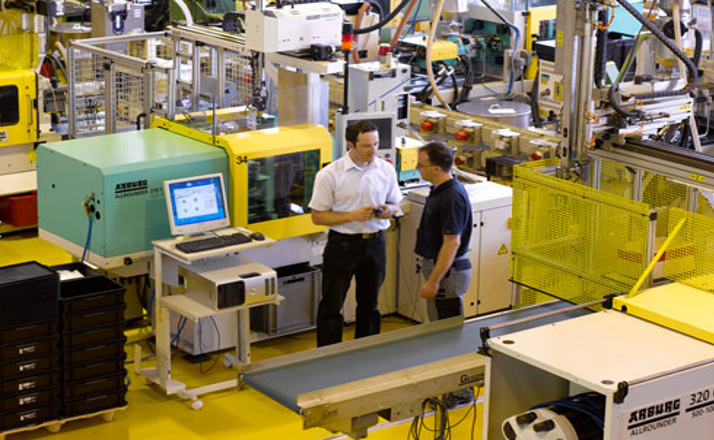Maximizing Your Results with Market Insights & LeadershipKnow what your customers wants and position your company for the win. Andreas Reger is the current President of BBB Industries and Former CEO of multiple manufacturing companies, including Alpla N.A., Durr,...

The Case for a Diversified Board
The Case For a Diversified Board
10 Ways Your Board Can Problem Solve Faster



Considering a board of diversity is not merely suggesting to check a box in order to establish company compliance. In a greater sense it is about putting together a team with diverse skills, competencies, philosophies and life experiences. Complex situations demand for greater insight. Multiple points of view present a broader picture and offer a wider context into problems that need to be solved. It is becoming more clear that one of the most under-utilized strategies for company success is board room diversification.
Right now the U.S. plastics industry is experiencing phenomenal economic growth and many investors are itching to take advantage of the opportunities. However, with increased customer demand, there is also a demand for plastic processors to deliver faster and more efficiently than ever. My friends, this is where the “rubber hits the road”.
Unrelated to plastics, but well known for his exceptional level of success in creating high performing cultures, former CEO and Executive Chairman of Dunkin’ Brands Nigel Travis commented on the subject during a recent podcast stating,
There is an evolving trend where you have to have younger board members
Later he noted
Now there is a pretty significant gap in the way that people are educated.
It is no secret that the way that problems are solved today are much different than they were even 5 years ago, let alone 20, 30 or 40 years ago. Yet in the plastics industry studies show that many boards are still primarily made up of people that are middle-aged. To compound the problem, the majority of board members tend to consist of multiple people with similar backgrounds. Some studies show that up to 70% of boards are comprised of members with a financial, business development and/or investment background. This heavily narrows the insight of how business should be conducted from a strategic standpoint.


Here are the top 10 reasons to diversify your board.
1. It is a more accurate view of your entire company
Insights have more meaning when the information can be trusted. Robust discussion from multiple perspectives gives further insight into potential
2. In a problem-solving board, healthy debate leads to better and more competitive decisions.
A
3. Different backgrounds mean looking at the solution in a variety of ways and often exposes the best answer
Sometimes that answer to a problem is more complex than the business situation alone. Culture, skills, experiences and variable backgrounds could be the reason your company is failing to achieve greatness.
4. Disrupting the status quo leads to more innovative thinking.
Innovation comes alive in an environment of challenging the status quo. Just because a problem was solved 1 year ago, doesn’t mean there isn’t a better answer. Technology continues to push the boundaries, and if companies aren’t careful, they will find themselves wasting time and resources while their competitors gain more ground. Having someone with a technical background is a MUST on company boards.
5. Your clients and customers are diverse in their thought process
There may be a better way to approach your clients. Perhaps their values are different than yours. Getting a more diverse perspective may sway your strategic approach.
6. Provides a wider scope of solutions to existing/future problems
It’s easy to think a problem is solved when it really isn’t. Band-aid solutions often disguise themselves as a solution in the short term, but ultimately come back around to reveal the truth. With a robust scope companies can put together comprehensive solutions leading to not only short term success but sustainability.
7. Counsel from a variety of people
Leaders who receive counsel from a full array of perspectives are often able to fix problems much quicker than those who will only listen to a single group of people. Rather than waiting for a problem, get ahead of it from a wide spectrum point of view.
8. Moral is improved when there is a sense of your thoughts being valued
People like to be respected and heard. When they feel like they can contribute they feel valued, and they are less likely to look anywhere else for work. Putting together a diversified board speaks volumes to the overall workforce.
9. Improve your reputation and brand
You can gain a ton of insight from a diverse group of people. Especially as it relates to your products and services. Everyone has ideas for internal improvements and well as external. Solve problems, then branding and reputation will automatically follow.
10. Adaptability to solve problems increases
With your leadership team driving a culture of problem-solving from a wide point of view, people will follow. Rather than solving all the problems, get the solutions from your staff and save time and money. Nigel Travis on tariffs, competition and the need for a ‘Challenge Culture’.
Advances in technology and innovations are more complex than they have ever been. Top companies need to have robust strategies if they are to be successful in the future. Diversifying your companies board is a great way to gain insights that can be leveraged for the benefit of your company.
These are my top 10’s, do they align with yours? What is your company putting into place to compete in manufacturing? I’d like to hear your thoughts, as I read every one.
***COMMENT ON LINKEDIN OR AT THE VERY BOTTOM OF THE PAGE***



Rob Edwards
President | Executive Search
Rob is currently the President of Molding Business Group’s Board, C-Suite and Leadership Executive Search Services. MBG specializes in plastic manufacturing leadership search, and has earned a national Top 10 ranking. With over 3,000 placements our Executive Search Team is passionate about building talented businesses by working with Stakeholders, Executive Teams and HR to place and developing top leaders in the plastics industry.
Rob also serves on the Forbes Coaches Council.
Related Articles
Eps 02 | Andreas Reger, Former CEO Alpla North America
M&A Deals for March 2020
March M&A Deal List Plastic Industry M&A Activity for MarchWith the world changing on a dime due to COVID-19 it has been a challenging time that many Executives have not seen before. Some have more demand than they can handle, while others are at a complete...
Eps 01 | Nigel Travis, Former CEO of Dunkin Brands
Podcast - Build a Winning Culture What Does it Take to Drive a Successful Culture?Nigel Travis is the Former CEO of Dunkin Brands, with a background in HR. Nigel has held high-level Executive Roles with companies such as Papa Johns, Blockbuster and more. Currently...
















